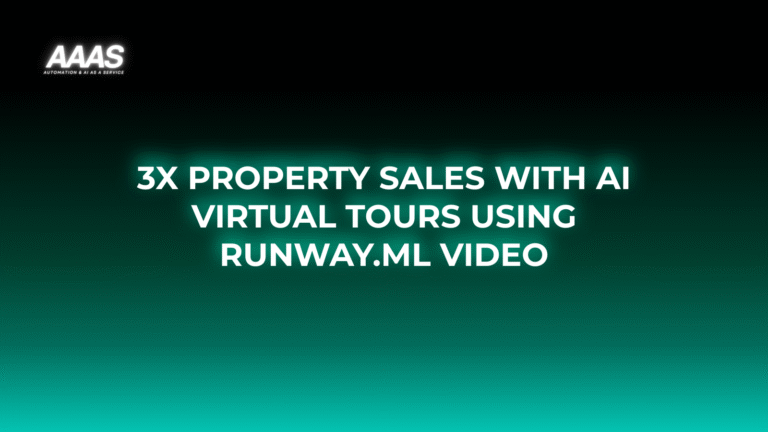Integrating No-Code Automation Platforms with SaaS Tools for Seamless Workflow Management

Market Problem
Modern organizations depend on a suite of SaaS tools—CRMs, email, project management, cloud storage—to run operations. However, lack of direct integrations and manual processes results in data silos, duplicated effort, human error, and lost productivity. According to State of SaaS, average teams use over 130 SaaS apps, making seamless workflow management a pressing challenge across industries.

Solution & Benefits
No-code automation platforms—like Zapier, Make, and n8n—bridge the gap by allowing teams to visually connect SaaS tools, automate repetitive tasks, and orchestrate complex workflows without writing code. Integrating these platforms with SaaS tools delivers measurable benefits:
- Boosted Productivity: Employees focus on high-value work rather than manual data entry.
- Operational Efficiency: Automated handoffs reduce bottlenecks and context switching.
- Cost Reduction: Fewer errors, less need for custom development, and leaner operations.
- Faster Time to Market: New workflows can be deployed in hours, not weeks.
- Scalability: Easily expand integrations as needs evolve.
Real Use Cases
- Lead Management Automation: When a lead fills a web form (Typeform), details are pushed to CRM (HubSpot), a Slack notification is triggered, and a personalized email is sent—no coding required.
- Automated Invoice Processing: On invoice upload to Google Drive, the file is parsed, data is sent to an accounting SaaS (Xero), and stakeholders are notified.
- HR Onboarding: New hire info in BambooHR triggers automated creation of IT accounts (Okta), welcome packets, and first-day calendar invites via Google Workspace.
- Marketing Campaigns: New blog post on WordPress is auto-shared to LinkedIn, Twitter, and posted to internal Slack channels for employee advocacy.
Technical Details
How No-Code Automation Works with SaaS Tools
No-code platforms offer visual interfaces to connect triggers (events) from one app to actions in another. Integration flows typically involve:
- Authentication: Securely link SaaS accounts via OAuth, API keys, or service accounts.
- Building Workflows: Drag-and-drop logic (if/then, filters, delays).
- Data Mapping: Select which fields and objects to transfer between apps.
- Error Handling: Configure automatic retries and alerts for failed automation runs.

Popular platforms support hundreds to thousands of SaaS integrations, including Salesforce, Mailchimp, Shopify, and Asana. Advanced features like branching logic, scheduling, and multi-step automations are also available.
Comparison with Alternatives
| Feature | No-Code Platform | Custom Coding | Native SaaS Integrations |
|---|---|---|---|
| Setup Time | Minutes – Hours | Days – Weeks | Immediate (if available) |
| Flexibility | High | Very High | Limited |
| Cost | Low to Medium | High (developer hours) | Free or Included |
| Scalability | Easy | Complex | Depends on app |
| Maintenance | Low | High | Low |
While custom integrations and native connectors have their place, no-code platforms balance speed, ease-of-use, and flexibility for most business scenarios.
Pricing Table: Leading No-Code Automation Platforms
| Platform | Starting Price | Key Features | Free Tier? |
|---|---|---|---|
| Zapier | $19.99/mo | Thousands of integrations, multi-step flows, advanced admin | Yes |
| Make (Integromat) | $9/mo | Visual editor, HTTP module, in-depth error handling | Yes |
| n8n | Free (Self-hosted), $20/mo (Cloud) | Open source, unlimited workflows, self-hosting option | Yes |
| Workato | Custom | Enterprise-grade, API management, advanced security | No |
* Pricing as of August 2025. See platforms for full details and updated rates.
ROI-Focused Practical Examples
- SMB: Automating data entry between Shopify and QuickBooks saves an average of 10 hours per week, equating to $500+ in monthly labor savings.
- Mid-Market: Marketing automation cuts manual campaign prep time by 60%, freeing staff for higher-value tasks and shortening sales cycles.
- Enterprise: Automated support ticket routing with Jira and Zendesk reduces resolution time by 30%, increasing customer satisfaction and retention.
Tip: Calculate ROI as: (Time Saved × Hourly Wage × Weeks per Year) – (Annual Platform Subscription).
Setup Steps: Integrating No-Code Automation with SaaS
- Choose your automation platform (e.g., Zapier, Make, n8n) based on cost/feature fit.
- List your SaaS tools and identify recurring, manual workflows.
- Create accounts and connect your apps securely using API keys/OAuth.
- Use the no-code builder to set up triggers and actions (example: “When new Trello card → send Slack alert”).
- Test each workflow with sample data before activating live automation.
- Train users, document workflows, and monitor for errors or changes as API endpoints evolve.
Pros & Cons
| Pros | Cons |
|
|
Expert Tips
- Start with a high-impact, low-complexity use case for quick wins.
- Regularly review workflows for optimization and de-duplication.
- Document your automations and share knowledge across teams.
- Use platform monitoring/alerts to promptly catch errors or outages.
- Leverage built-in encryption and access controls for sensitive data integrations.
- Review SaaS data privacy best practices.
Frequently Asked Questions (FAQ)
- Do I need to know how to code to set up these integrations?
- No—these platforms are designed for non-developers. Most workflows can be built using visual interfaces.
- What happens if an app changes its API?
- Leading platforms prompt you to update connections. Workflows may require tweaks after major SaaS updates.
- Are there security risks?
- Reputable platforms use strong encryption and isolated connections. Always review permissions and limit access to sensitive data.
- Can I migrate or scale automations easily?
- Yes. Most platforms offer export/import tools and flexible scaling plans for growing teams.
- What SaaS tools are most commonly integrated?
- Google Workspace, Slack, Salesforce, HubSpot, Shopify, Trello, and Asana lead the list for business productivity workflows.
References & Citations
Last updated: August 14, 2025







